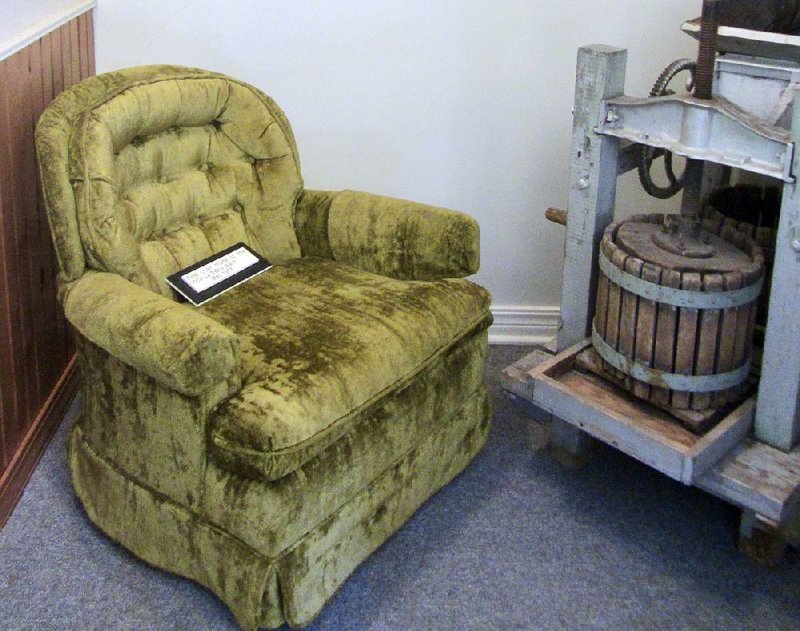SILOAM SPRINGS -- You'd expect to find a La-Z-Boy in a family's den or media room. But this La-Z-Boy occupies a place of pride. It's on display at Siloam Springs Museum.
The avocado-green chair is labeled as the first one made in 1973 at the La-Z-Boy plant in this Northwest Arkansas town nestled against the border with Oklahoma. It shares exhibit space with an antique press for making juice from the apples once widely grown in the area.
Local museums are among the less appreciated treasures of Arkansas communities. Siloam Springs Museum is among the most enjoyable in terms of the story it tells about the town and surrounding area.
Prehistory makes up the earliest part of the presentation, going back to the time when this corner of the future Arkansas was a fertile hunting ground for the Osage nation. An exhibit describes the Caddoan mounds south of town. The American Indians were mostly gone when white pioneers began arriving in the 1830s to create a community for a while called Hico.
Siloam Springs is proud of its attractive parks lining Sager Creek, named for Simon Sager. His family members are believed to have been the first white settlers in the area, which was victimized during the Civil War by forces from the Union and the Confederacy, as well as by marauding outlaws.
Incorporated in 1881 as Siloam Springs, a name derived from a pool of healing water mentioned in the New Testament, the town saw the arrival of train service by 1893 from the Kansas City, Pittsburg & Gulf Railroad.
That helped bring visitors eager to enjoy the curative waters from eight or more local springs. Displays point out the springs' economic importance here a century ago. It is also noted that their water is no longer safe to drink due to high bacteria levels.
Don Warden, museum director, has been on the job since 1991 and is highly knowledgeable about the exhibits. He is happy to show visitors around when he has time.
The museum is in Siloam Springs Downtown Historic District, listed on the National Register of Historic Places. The 65 properties in the district, venue for a pleasant walking tour, are bounded roughly by Sager Creek on the west, Ashley Street to the north, Madison Avenue to the east, and Twin Springs Street to the south.
As described in the National Register listing, "A majority of the properties are one-story or two-story brick masonry party-wall commercial storefront buildings. These form a relatively continuous streetscape with sufficient detail to evoke historic continuity and to reflect the modest but sustained commercial prosperity of the late 19th and early 20th century in Siloam Springs."
Thanks to the La-Z-Boy plant and a number of other light industries, as well as the presence of John Brown University and Northwest Arkansas' overall growth, Siloam Springs' population has grown from 7,940 in 1980 to 15,039 in 2010. It is prospering in ways that a good many Arkansas towns would envy.
Siloam Springs Museum, 112 N. Maxwell St., Siloam Springs, is open 10 a.m.-5 p.m. Tuesday-Saturday. Admission is free, with donations welcome. Visit siloamspringsmuseum.com or call (479) 524-4011.
Weekend on 08/24/2017
